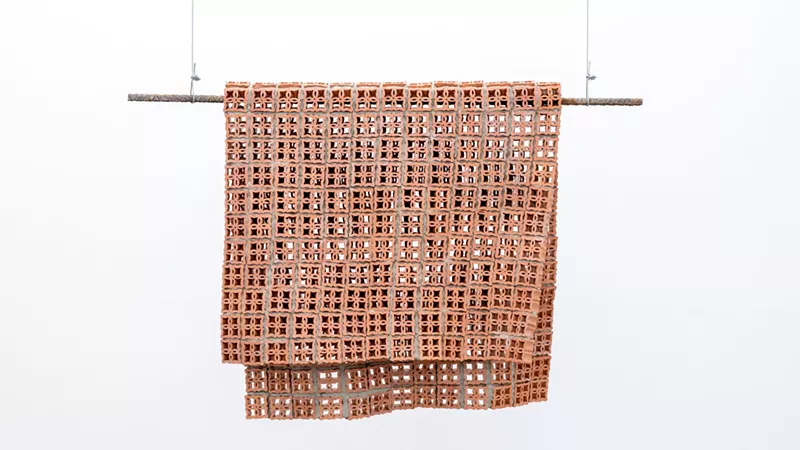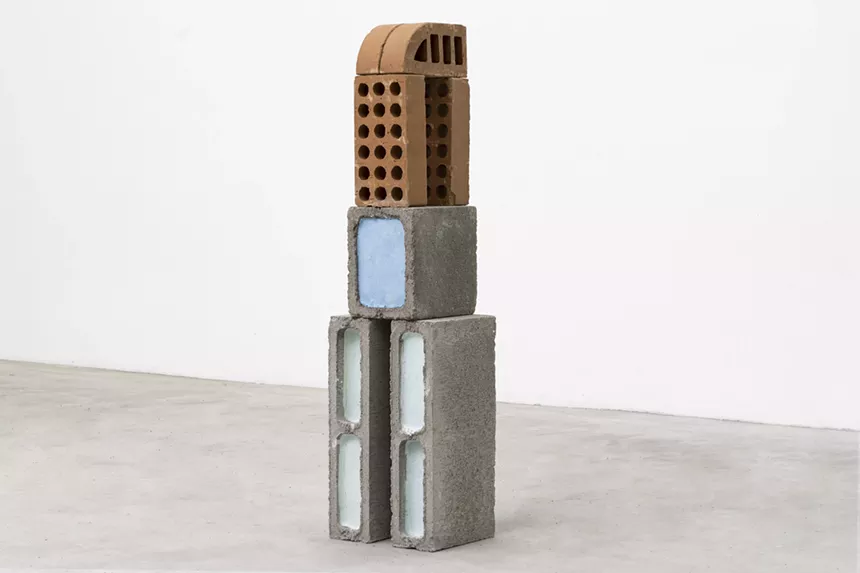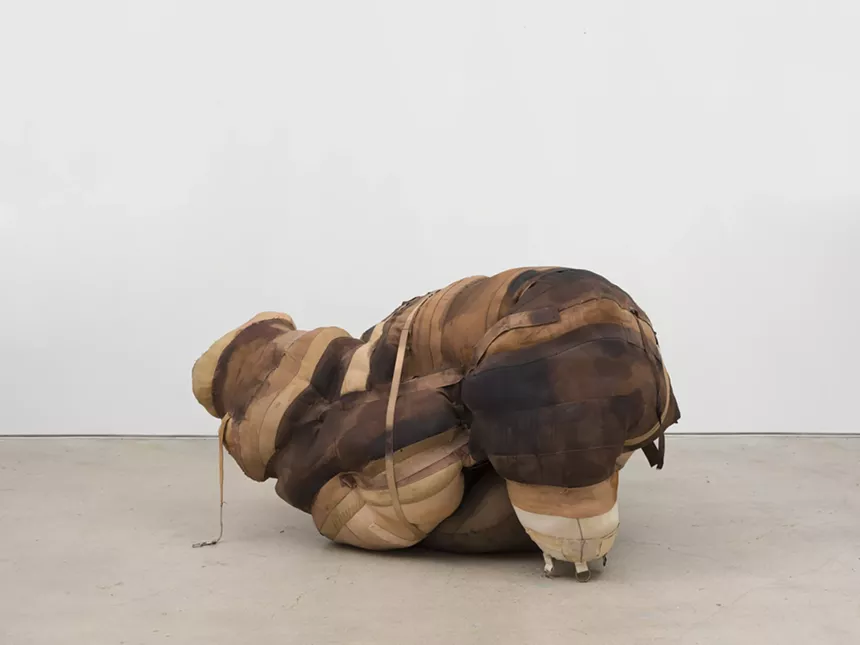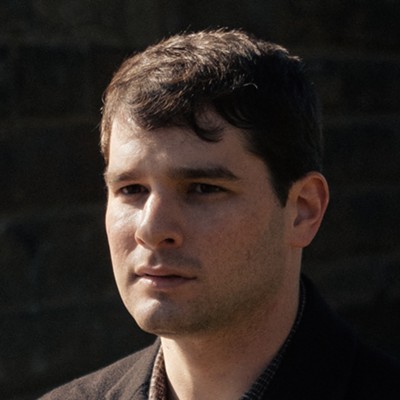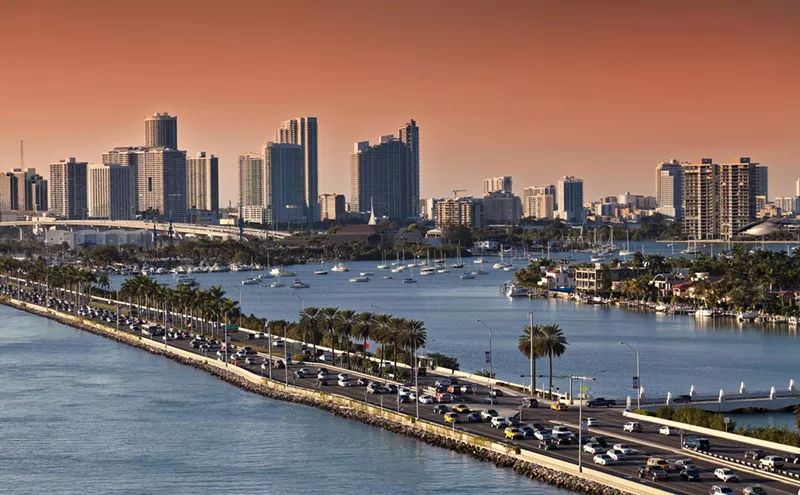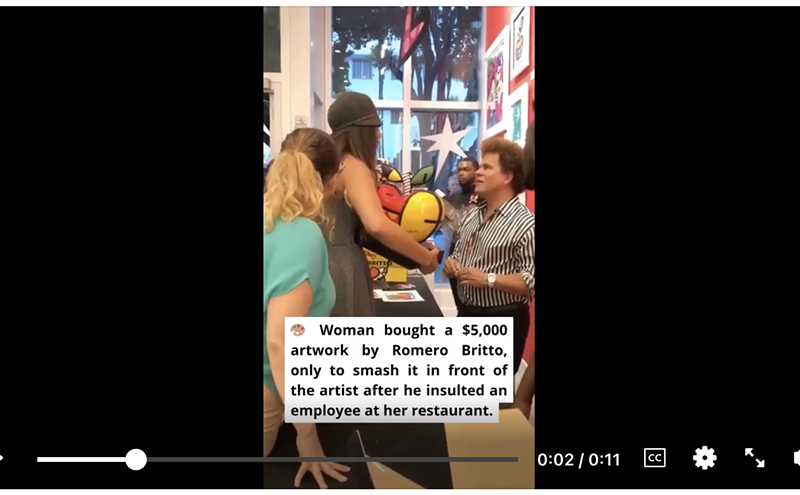The phrase "Last Days of a House" conjures strong emotional imagery: emptiness, abandonment, sorrow. It's part of the picture Cuban poet Dulce María Loynaz wanted to evoke with her poem of the same name.
"The house becomes like a body, and all its vulnerabilities and sensitivities to time," says Tyler Emerson-Dorsch, a partner at Emerson Dorsch Gallery. "There's mourning in the poem and resistance."
Guest-curated by Untitled Art Fair artistic director Omar Lopez-Chahoud, the show features works from 20 artists from 14 countries, selected from a field of nearly 500 candidates that have participated in Fountainhead's artist residency in Miami. Founded in 2008, the program has brought hundreds of artists worldwide to live and work in South Florida. Emerson-Dorsch began visiting Fountainhead artists at the residency studio, a midcentury house in Morningside, when she was pregnant and unable to travel, feeling that the artists were a way of connecting with the world outside of Miami.
"It's a space that brings in people from the outside, from around the country and the world," Emerson-Dorsch says. "We started [the biennial] two years ago, in 2021, with the idea of engaging with a local institution that's sort of an incubator for launching new talent within Miami."
Fountainhead Arts, the nonprofit which runs the residency, also happens to be sunsetting its artist studio complex in Little River. (The building is scheduled to be demolished.) Emerson-Dorsch says the title of the show is unrelated. Instead, the title came about after a conversation with Lopez-Chahoud in which he brought up Loynaz's poem, one of the last she wrote before entering into internal exile after the Cuban Revolution.
"It forms the soul of the show," Emerson-Dorsch says. "The more I look through the works in the show, the more I completely agree with Omar's identification of the poem with these works."
Raised in a wealthy Havana household frequented by the arts and letters crowd, Loynaz showed early promise as a writer. When she was 17, her father, a famous general in the country's liberation fight against Spain, began submitting her poems to Havana newspapers, starting a long career as a writer. Her work, full of domestic details and simple language, found greater popularity in Spain and Latin America than in the more politically charged environment of pre-Castro Cuba. She was awarded the Cervantes Prize, Spanish literature's highest honor, by King Juan Carlos I of Spain in 1992.
In 1959, rather than go into exile like many other artists after the Communist revolution, she stayed in Cuba but stopped writing poetry and withdrew from public life, only reemerging when the Cuban public rediscovered her work in the 1980s and '90s. "She chose to have a loud silence," Emerson-Dorsch says.
Ibett Yanez del Castillo, the director of Emerson Dorsch, says most of the works in the show reflect on ideas of home and belonging, much like Loynaz's poem. Some pieces, such as Manoela Medeiros' cinderblock sculptures or Andrey Zignnatto's hanging curtains made of brick, utilize building materials or possess elements that recall common architectural features, such as windows. Others interact with Loynaz's personification of the house as a body. Patricia Ayres, who recently showed at the Rubell Museum, creates flesh-colored sculptures of foam wrapped in fabric that Emerson-Dorsch finds remarkable for their fleshy quality.
According to Emerson-Dorsch, one of the more immersive pieces is a video by Minia Biabiany titled Learning from White Birds, which features imagery that complements the poem. Palm trees are pulped and processed by human hands, resembling breath. A view of a window looking outside from within a dark room changes with the time of day, going from yellow to dark red. The piece seems to meditate on bodily characteristics in a way not unlike Loynazs' writing.
"The works inform the reading of the poem, and the poem informs the reading of the works," Emerson-Dorsch says.
Fountainhead Biennial II: "Last Days of a House." Thursday, July 27, through Saturday, September 30. at Emerson Dorsch Gallery, 5900 NW Second Ave., Miami; 305-576-1278; emersondorsch.com. Opening reception Thursday, July 27, 6 to 9 p.m. Wednesday through Saturday noon to 5 p.m.

Audio By Carbonatix
[
{
"name": "GPT - Billboard - Slot Inline - Content - Labeled - No Desktop",
"component": "22004575",
"insertPoint": "2",
"requiredCountToDisplay": "2"
},{
"name": "STN Player - Float - Mobile Only ",
"component": "22595215",
"insertPoint": "2",
"requiredCountToDisplay": "2"
},{
"name": "Editor Picks",
"component": "17482312",
"insertPoint": "4",
"requiredCountToDisplay": "1"
},{
"name": "Inline Links",
"component": "18711090",
"insertPoint": "8th",
"startingPoint": 8,
"requiredCountToDisplay": "7",
"maxInsertions": 25
},{
"name": "GPT - 2x Rectangles Desktop, Tower on Mobile - Labeled",
"component": "23181625",
"insertPoint": "8th",
"startingPoint": 8,
"requiredCountToDisplay": "7",
"maxInsertions": 25
},{
"name": "Inline Links",
"component": "18711090",
"insertPoint": "8th",
"startingPoint": 12,
"requiredCountToDisplay": "11",
"maxInsertions": 25
},{
"name": "GPT - Leaderboard to Tower - Slot Auto-select - Labeled",
"component": "17720761",
"insertPoint": "8th",
"startingPoint": 12,
"requiredCountToDisplay": "11",
"maxInsertions": 25
}
]

